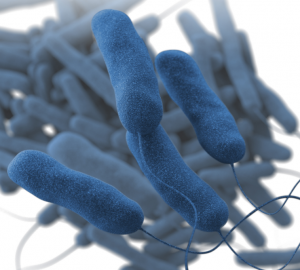NewsDesk @bactiman63
The Victoria Department of Health has identified an outbreak of Legionnaires’ disease involving three cases who have spent time in Cheltenham and the surrounding suburbs. Cases had symptoms commencing in early to mid-May 2023 and have received treatment in hospital.

Image/CDC
Investigations are underway to identify the source of the outbreak through testing local cooling towers and other potential sources.
Legionnaires’ disease is caused by Legionella bacteria, which are widespread in the environment. They are found in natural bodies of water such as rivers, lakes, creeks and hot springs. They are also found in spas, warm water systems and artificial systems that use water for cooling, heating or industrial processes, such as cooling towers, as well as potting mix.
Legionnaires’ disease is spread by breathing in fine droplets of water that contain the bacteria. It is not spread from person-to-person or by drinking contaminated water.
Who is at risk?
Although the bacteria is commonly found in the environment, only a few people who come into contact with the bacteria become infected. People who are at greater risk include those who:
- are older (usually over 65 years of age)
- smoke
- drink excess alcohol
- have chronic lung disease
- have a weakened immune system
- have other underlying medical conditions such as diabetes, cancer or kidney failure.
Subscribe to Outbreak News TV on YouTube
Legionnaires’ disease often presents with initial flu-like symptoms such as headache, fever, chills, muscle aches and pains, and cough which may progress to an atypical chest infection, also known as atypical pneumonia. Other symptoms may include confusion and diarrhoea. Some people with Legionnaire’s disease may also develop kidney impairment.
A person may develop Legionnaires’ disease by breathing in fine droplets of water that contain the bacteria. It cannot spread from person-to-person or by drinking contaminated water.
- Afghanistan reports Crimean–Congo haemorrhagic fever (CCHF) outbreak in north region
- Namibia declares outbreak of Crimean-Congo hemorrhagic fever
- Florida: Mosquito-borne illness advisory issued due to malaria case
- Thailand: Dengue cases up in 2023
- Mumps outbreak update in South Africa
- Georgia: 8 Crimean-Congo hemorrhagic fever cases reported recently
- Japan: Syphilis cases top 5,000, Measles outbreak, Mpox cases rising
- Uruguay: Local transmission of chikungunya reported in Montevideo

